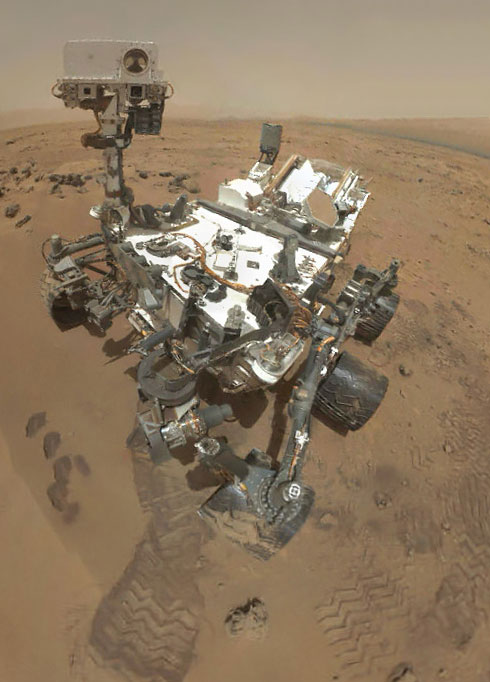Humans can survive on Mars
The American Curiosity autonomous device recognizes that radiation on Mars is equivalent to the radiation on low Earth's orbit so humans can function normally on the red planet.
Curiosity analyzed radiation levels on Mars since it landed on the red planet in August. The results of the first analysis show that the radiation concentration on Mars is equivalent to the radiation concentration on Station No. International space, a device that is moving on low Earth's orbit, Space reported.

A picture of Curiosity was taken by the device itself on Mars. (Photo: NASA)
"Astronauts certainly can live in Mars's environment , " said Don Hassler, a Southwest Research Institute scientist in the US. Hassler is the leader of Mars's radiation analysis specialist with the Radiosity Radiation Assessment Detector.
Analyzing radiation levels on Mars will help scientists better understand the history of the red planet. Radiation data is also useful information for planning to send people to Mars in the future.
"Radiation levels on the Martian surface equal to about half of the radiation levels Curiosity suffered during flight to the red planet in nine months," Hassler said.
The discovery shows that the Martian atmosphere, although only 1% thick compared to the earth's atmosphere, still has the ability to block particles carrying energy and move quickly from space.
Hassler and colleagues also found that radiation levels on Mars increased or decreased by 3 to 5% per day, corresponding to an increase or decrease in the thickness of the atmosphere.
- Humans will live on Mars?
- Humans can only survive 68 days on Mars
- 'That' on Mars will be dangerous, but it can create new subspecies of humans
- Mars on Mars is very harmful to humans
- NASA explains the confusing
- People who survive on Mars can evolve into new species
- 5 ways to warm Mars without a nuclear bomb
- Mars is not 'hospitable' as people think
- 'Move' up ... Mars, how much will it cost you?
- Here's how humans live on Mars: Growing vegetables in a cellar and ... chewing on live insects
- If you don't bring people to Mars, humans will soon become extinct
- Details of how humans will live in Mars, expected in 20 years
 Van Allen's belt and evidence that the Apollo 11 mission to the Moon was myth
Van Allen's belt and evidence that the Apollo 11 mission to the Moon was myth The levels of civilization in the universe (Kardashev scale)
The levels of civilization in the universe (Kardashev scale) Today Mars, the sun and the Earth are aligned
Today Mars, the sun and the Earth are aligned The Amazon owner announced a secret plan to build a space base for thousands of people
The Amazon owner announced a secret plan to build a space base for thousands of people